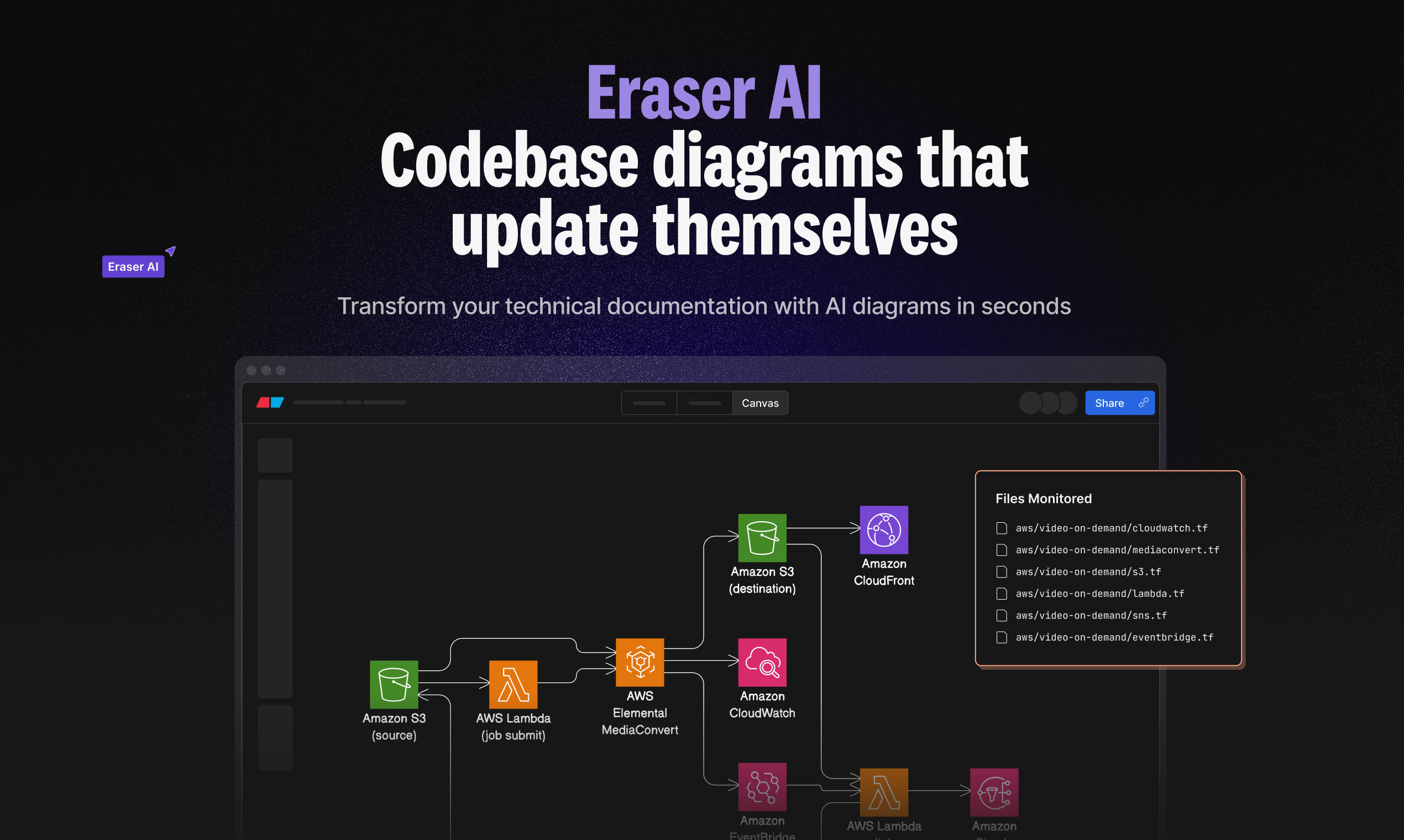Table of Contents
Overview
Tired of outdated diagrams that don’t reflect your codebase? Enter Eraser AI, a revolutionary diagramming tool that automatically generates and updates technical diagrams directly from your code. Say goodbye to tedious manual updates and hello to live, accurate visualizations of your infrastructure, architecture, data models, and logic flows. Eraser AI ensures your documentation stays in perfect sync with your development, saving you time and boosting team collaboration.
Key Features
Eraser AI boasts a powerful set of features designed to streamline your diagramming process:
- Live Diagram Updates from Codebase: Automatically regenerates diagrams whenever your code changes, ensuring your documentation is always up-to-date.
- Diagram-as-Code: Treat your diagrams as code, allowing for version control and easy sharing.
- Real-time Collaboration: Collaborate with your team on diagrams in real-time, fostering better communication and understanding.
- GitHub, Notion, Confluence Integrations: Seamlessly integrate Eraser AI with your existing workflow tools for enhanced productivity.
- Natural Language Prompt-Based Diagram Creation: Generate diagrams using simple natural language prompts, making diagram creation accessible to everyone.
How It Works
Eraser AI simplifies the diagramming process by connecting directly to your Git repositories. It constantly monitors these repositories for any code changes. When it detects an update, Eraser AI utilizes its AI engine and predefined rules to automatically regenerate the relevant diagrams. This continuous synchronization ensures that your documentation always reflects the latest state of your codebase, eliminating the need for manual updates and reducing the risk of errors.
Use Cases
Eraser AI can be applied to a wide range of scenarios, including:
- Software Development Documentation: Create and maintain accurate documentation for your software projects, ensuring everyone is on the same page.
- System Architecture Visualization: Visualize your system architecture to gain a better understanding of its components and their relationships.
- Infrastructure Mapping: Map out your infrastructure to identify potential bottlenecks and optimize performance.
- Data Model Illustration: Illustrate your data models to facilitate communication and collaboration between developers and stakeholders.
- Real-time Technical Collaboration: Facilitate real-time collaboration on technical diagrams, enabling teams to work together more effectively.
Pros & Cons
Like any tool, Eraser AI has its strengths and weaknesses. Let’s take a closer look:
Advantages
- Automates Diagram Updates: Eliminates the need for manual diagram updates, saving you time and effort.
- Reduces Manual Documentation Work: Streamlines the documentation process, freeing up developers to focus on coding.
- Enhances Accuracy: Ensures that your diagrams are always accurate and up-to-date, reducing the risk of errors.
- Supports Collaboration and Integrations: Facilitates collaboration and integrates seamlessly with your existing workflow tools.
Disadvantages
- Limited to Supported Platforms: Currently supports a limited number of platforms, which may not be suitable for all users.
- Dependency on Code Structure for Effectiveness: The effectiveness of Eraser AI depends on the structure of your codebase.
How Does It Compare?
When compared to other diagramming tools, Eraser AI stands out for its unique code integration capabilities.
- Lucidchart: Requires manual updates, lacking the automatic code integration offered by Eraser AI.
- Miro: Focuses on general whiteboarding and brainstorming, making it less suitable for technical diagramming compared to Eraser AI.
- Mermaid: Uses text-based diagrams, lacking the direct Git integration and visual interface of Eraser AI.
Final Thoughts
Eraser AI is a game-changer for teams looking to streamline their diagramming process and keep their documentation in sync with their codebase. Its automated updates, collaboration features, and integrations make it a valuable tool for software development, system architecture, and infrastructure mapping. While it has some limitations, the benefits of Eraser AI far outweigh the drawbacks, making it a worthwhile investment for any organization that values accurate and up-to-date documentation.
